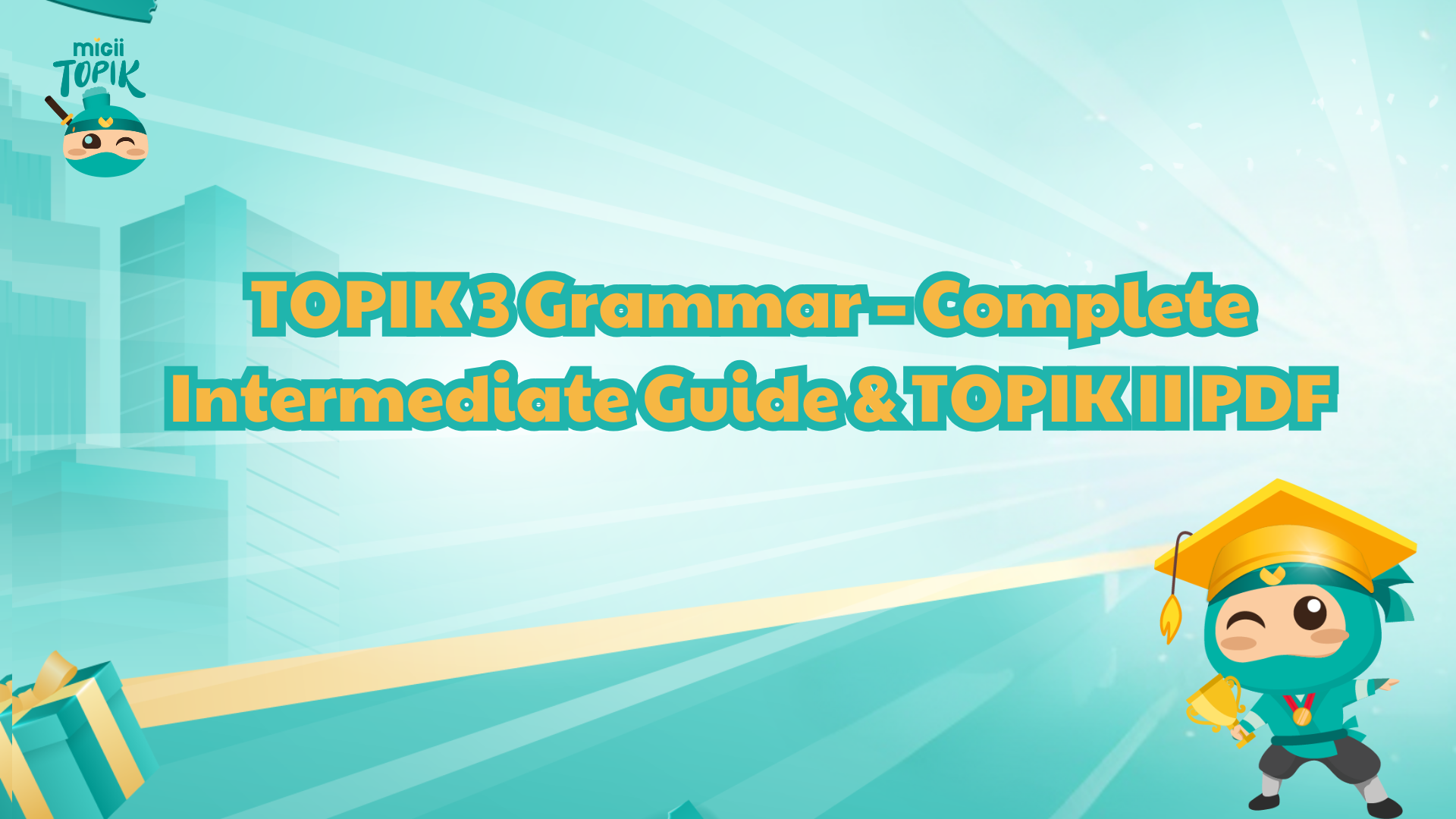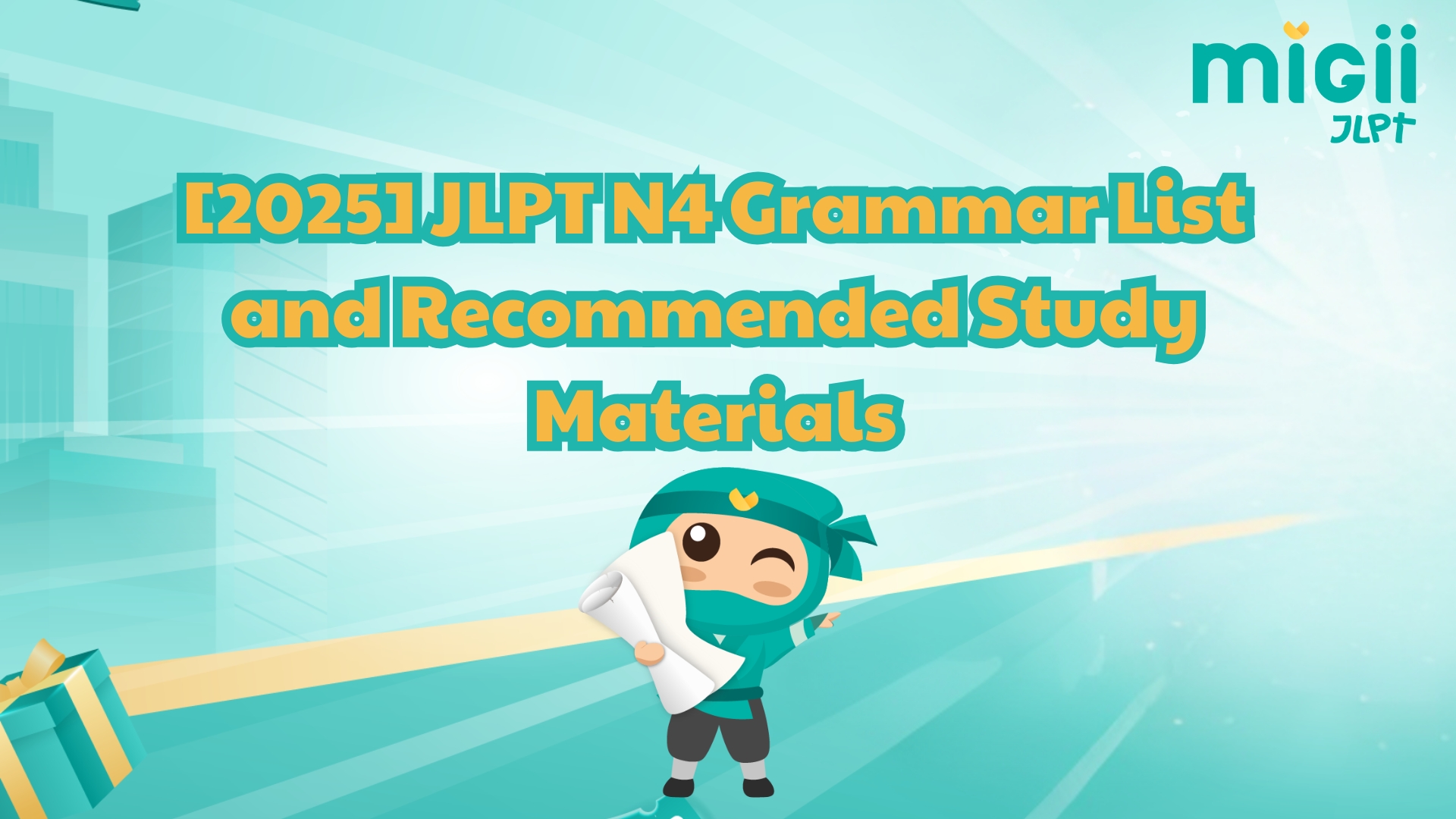JLPT N3 grammar is a vital foundation for learners aiming to progress from basic to intermediate Japanese. In this complete 2025 guide, Migii provides clear explanations, practical tips, and proven strategies to help you master key grammar points, avoid common mistakes, and boost your confidence for the JLPT N3 exam.
What is JLPT N3 grammar?
JLPT N3 grammar refers to the intermediate-level structures tested in the JLPT, bridging basic foundations and more advanced forms. It focuses on grammar used in real-life situations, requiring both recognition and application skills. Learners must understand nuance, context, and tone when using these patterns. This level marks a significant step forward from the beginner stages.
Compared to N4, N3 JLPT grammar includes more complex patterns used in conversations, emails, and short texts. It moves beyond basic forms to emphasize intent, context, and subtle differences. These points also appear in listening and reading tasks. Studying grammar at this level requires more than rote memorization.
The JLPT Level 3 grammar section features 100 - 150 essential patterns across varied topics. These include cause-effect, conditions, assumptions, and polite forms. Mastery boosts both test scores and real-life communication. Solid grammar knowledge is crucial for N3 success.
JLPT N3 grammar focuses on real-life context and nuance
Essential JLPT N3 grammar list for exam success
Mastering grammar is a vital step in your journey to conquer the JLPT N3 level. A solid grasp of grammar enables you to understand complex sentence structures, improve reading comprehension, and communicate with greater accuracy and flexibility.
By focusing on JLPT N3 grammar patterns with examples, you not only learn how each structure works but also gain insight into real-life usage that enhances both speaking and writing skills.
To help you streamline your study process, Migii has compiled an essential JLPT N3 grammar list, grouped into 9 common categories often seen in the JLPT exam. Each group comes with detailed explanations and practical usage examples to boost your understanding and retention. Whether you're just starting or reviewing, this N3 JLPT grammar list will be a powerful resource to guide your grammar studies efficiently.
|
No. |
Topic |
Grammar structure(s) |
Meaning |
Example sentence (EN + JP) |
|
1 |
State – Time |
あいだ(に)、ところだ、たびに、うちに |
During, when, every time… |
ちょうど出かけるところだった。I was just about to go out. |
|
2 |
Cause – Effect |
ためだ / ために、によって / による、から |
Because, due to… |
雪のため、電車が遅れた。Because of the snow, the train was delayed. |
|
3 |
Conditional – Assumption |
たら、とおりだ / ~とおりに / ~どおりだ / ~どおりに |
If, as, according to… |
お金があったら、旅行に行きたい。If I had money, I’d like to travel. |
|
4 |
Guess – Impression |
そうだ、らしい、ようだ |
It seems, apparently, looks like… |
彼は医者らしい。Apparently, he is a doctor. |
|
5 |
Comparison – Degree |
より、ほど、くらい / ~ぐらい |
More than, about, to the extent… |
今日は立っていられないくらい疲れた。I’m so tired today I can’t even stand. |
|
6 |
Preference – Choice |
ほうがいい、よりも |
Should, rather than… |
電車よりもバスのほうが安い。The bus is cheaper than the train. |
|
7 |
Repetition |
たびに、ばかり |
Every time, always… |
この曲を聞くたびに、学生時代を思い出す。Every time I hear this song, I remember my school days. |
|
8 |
Contrast |
反面(はんめん)、半面(はんめん)、一方(で) |
On the other hand, whereas… |
この都市は発展している一方で、環境問題も深刻になっている。This city is developing, but environmental problems are worsening. |
|
9 |
Wish – Hope |
ように |
Hope that, wish… |
父の病気がなおりますように。I hope my father recovers from his illness. |
JLPT N3 Grammar Resources
To effectively prepare for the JLPT N3, having the right grammar resources is essential. These carefully selected books will help you build a strong foundation in JLPT N3 grammar and improve your test performance.
Yosou Mondaishuu N3
Yosou Mondaishuu N3 is a focused JLPT preparation book that emphasizes grammar review through practical exam-style exercises. It covers a wide range of grammar patterns commonly seen in the N3 test.
The book is organized into grammar sections followed by detailed practice drills such as multiple-choice questions and fill-in-the-blank tasks. This format allows you to become familiar with actual test formats while reinforcing your grammar knowledge effectively.
Download Link:
Yosou Mondaishuu N3 strengthens JLPT N3 grammar through realistic test-style practice
TRY N3
TRY N3 is a comprehensive grammar textbook designed for learners aiming to master JLPT N3 grammar. The book introduces 113 essential grammar points, each presented with simple explanations and example sentences.
If you're looking for a well-structured JLPT N3 grammar list PDF, TRY N3 offers exactly that organized grammar content in a clear, lesson-based format. After each grammar point, learners can practice using various types of exercises, including sentence ordering, grammar application, and reading comprehension.
The inclusion of listening exercises also helps you build practical communication skills alongside grammar knowledge.
Download Link:
TRY N3 offers structured JLPT N3 grammar lessons with exercises and listening practice
Shinkanzen Master N3 Grammar
Shinkanzen Master N3 Grammar is a highly detailed grammar resource ideal for those who want to deepen their understanding of N3-level structures. The book is divided into three sections: grammar forms grouped by function and meaning, sentence formation techniques and cohesive writing skills.
Each chapter includes review exercises and a mock test to reinforce what you’ve learned. For learners searching for a structured and intensive JLPT N3 grammar practice PDF, this book serves as an excellent tool to simulate real exam conditions and measure your readiness.
Download Link:
Shinkanzen Master provides intensive JLPT N3 grammar practice with clear structure and mock tests
Tips to master JLPT N3 grammar
Mastering JLPT N3 grammar requires more than just memorizing patterns, it demands consistent practice and the right tools. Whether you're studying online or using a JLPT N3 grammar PDF, applying effective strategies can greatly boost your confidence and performance.
Comprehensive Grammar Study
Start by building a strong foundation with trusted N3 resources like Try! N3, Shin Kanzen Master, or Soumatome N3. Focus on understanding each grammar point’s meaning, usage, and natural sentence patterns. Instead of just memorizing, write your own examples and learn the context in which each structure is used. This approach helps grammar become part of your active language skills.
This method strengthens your JLPT N3 grammar by focusing on context, not just memorization
Active Application and Practice
Apply grammar in real situations to make it stick. Write short daily journals using new grammar points, speak with language partners, or join online communities for Japanese learners. Actively using grammar in writing and speaking trains your brain to recall it faster. Don’t be afraid to make mistakes, reviewing them is part of effective learning.
Use flashcards with spaced repetition
You can boost your grammar memory by using flashcards with a spaced repetition system (SRS). Apps like Anki or Quizlet help you review JLPT N3 grammar points efficiently over time. Make sure to include sample sentences on each card so you can see how the grammar is actually used in context. Regular review using this method will help you remember structures more naturally and long-term.
Flashcards with SRS help you retain JLPT N3 grammar patterns through consistent, spaced practice
Take regular JLPT-style grammar quizzes
You should take grammar quizzes in the same style as the JLPT N3 to get used to the test format. These quizzes help you find out which grammar points you're confident in and which ones need more work. After each quiz, reviewing both correct and incorrect answers allows you to understand your mistakes clearly. The more you practice under test-like conditions, the more confident and accurate you become.
Mock Tests and Exam Strategies
You need to take full mock tests to check your overall readiness for the real exam. These tests show how well you manage time, apply grammar knowledge, and handle pressure.
Along with practice, you should also learn test strategies such as skipping hard questions first or scanning for key grammar cues to maximize your score. Consistent mock test practice improves your performance and reduces exam-day stress.
Mock tests help you apply JLPT N3 grammar skills under real exam conditions and improve strategy
FAQs about JLPT N3 Grammar
How important is grammar in JLPT N3?
Grammar is a core part of the JLPT N3 exam. It makes up a significant portion of the Language Knowledge section and is essential for understanding reading and listening passages.
How many grammar points are there in JLPT N3?
There are approximately 100–120 grammar points commonly tested at the N3 level, depending on the resource or textbook you use.
What’s the best way to study JLPT N3 grammar?
Use structured textbooks like TRY!, Soumatome, or Shinkanzen Master. Combine reading with flashcards, practice exercises, and example sentence writing to reinforce understanding.
Can I pass JLPT N3 by only studying grammar?
No. While grammar is important, you also need to study vocabulary, kanji, listening, and reading. Grammar supports these skills but is only one part of the test.
Are N3 grammar points very different from N4?
Yes. N3 grammar introduces more nuance, longer sentence patterns, and structures used in formal or written Japanese. It builds upon N4 but is more complex and contextual.
Conclusion
Mastering JLPT N3 grammar plays a crucial role in helping you navigate the exam more confidently and effectively. With a solid understanding of grammar structures, you'll improve not just your test performance but also your ability to comprehend real-world Japanese. Keep practicing consistently, and you’ll find grammar becomes a natural part of your language skills.







